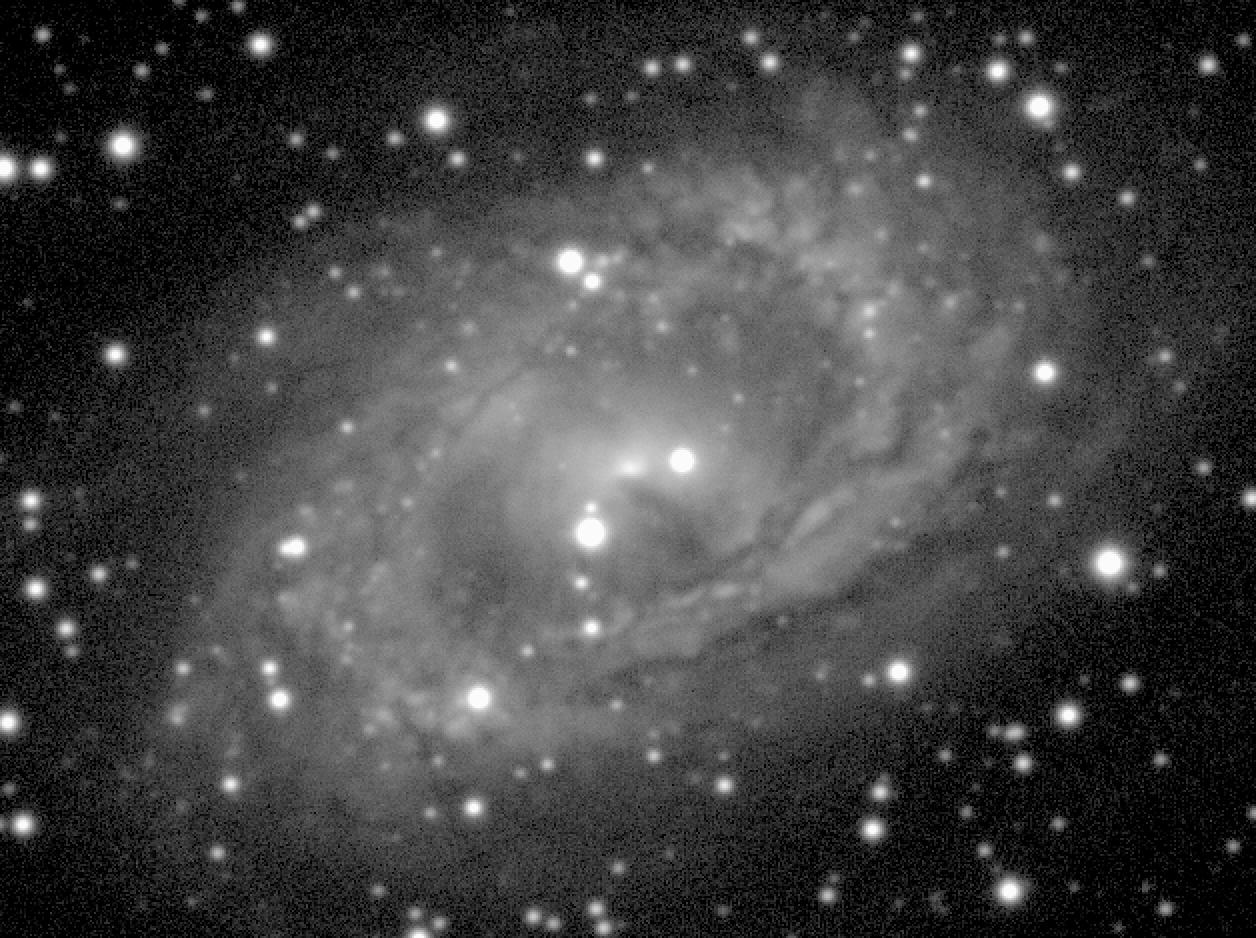

De Vaucouleurs Atlas Type: SB(rs)b
Filter: B
Telescope: CTIO 0.9-m
North up , East left
Field Dimensions: 4.2 x 3.1 arcminutes
RC3 Type: SB(rs)b
RSA Type: SBb(s)II pec
Surface Brightness Range Displayed: 19.0-26.0 mag per square arcsec
Absolute Blue Magnitude: -20.6
Elmegreen Spiral Arm Class: AC 6
De Vaucouleurs Atlas Description:
NGC 6300 has a highly foreshortened bar surrounded by a very complex spiral pattern that includes an inner pseudoring . Leading dust lanes are seen in the bar, one of which partly obscures the nucleus. Numerous ill-defined spiral features, delineated mainly by dust, seem to break away from the ring region and fade quickly into the extended outer disk. That the inner pseudoring is not typical was noted by Buta (1987b), who showed that in the galaxy plane, the bar axis and the intrinsic inner ring major axis are significantly misaligned. The rule is parallel alignment, as found in SB(r) galaxies like NGC 1433 .
NGC 6300 is well-studied both photometrically and kinematically. Most interesting is that the bright nucleus does not coincide with the center of rotation profiles measured by Buta (1987b). Buta et al. (2001b) showed that in the near-infrared, the observed nucleus is very close to that in the optical. Phillips, Charles, and Baldwin (1983) showed that NGC 6300 has a Seyfert nucleus, and Nelson and Whittle (1995) showed that such nuclei can exhibit strong non-rotational motions. Buta et al. (2001) attribute the nuclear velocity in NGC 6300 to this kind of effect.